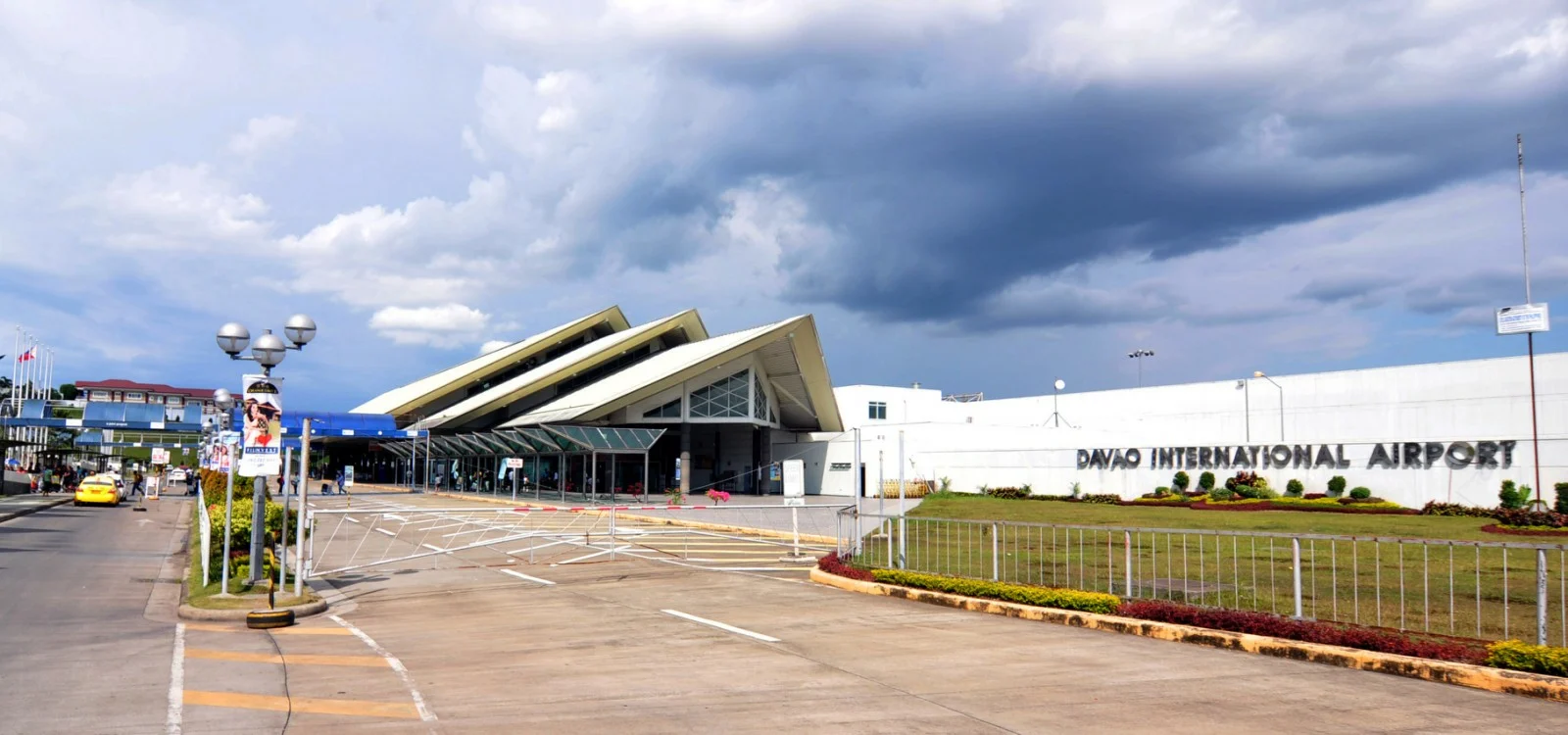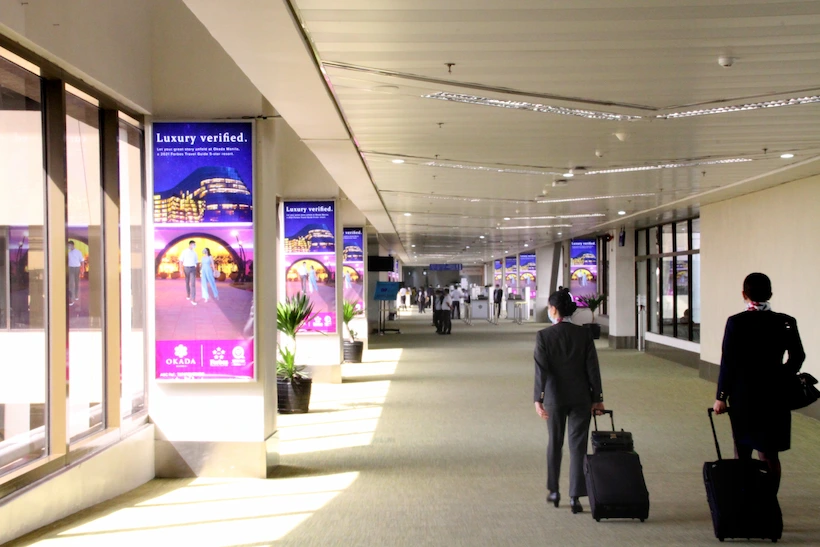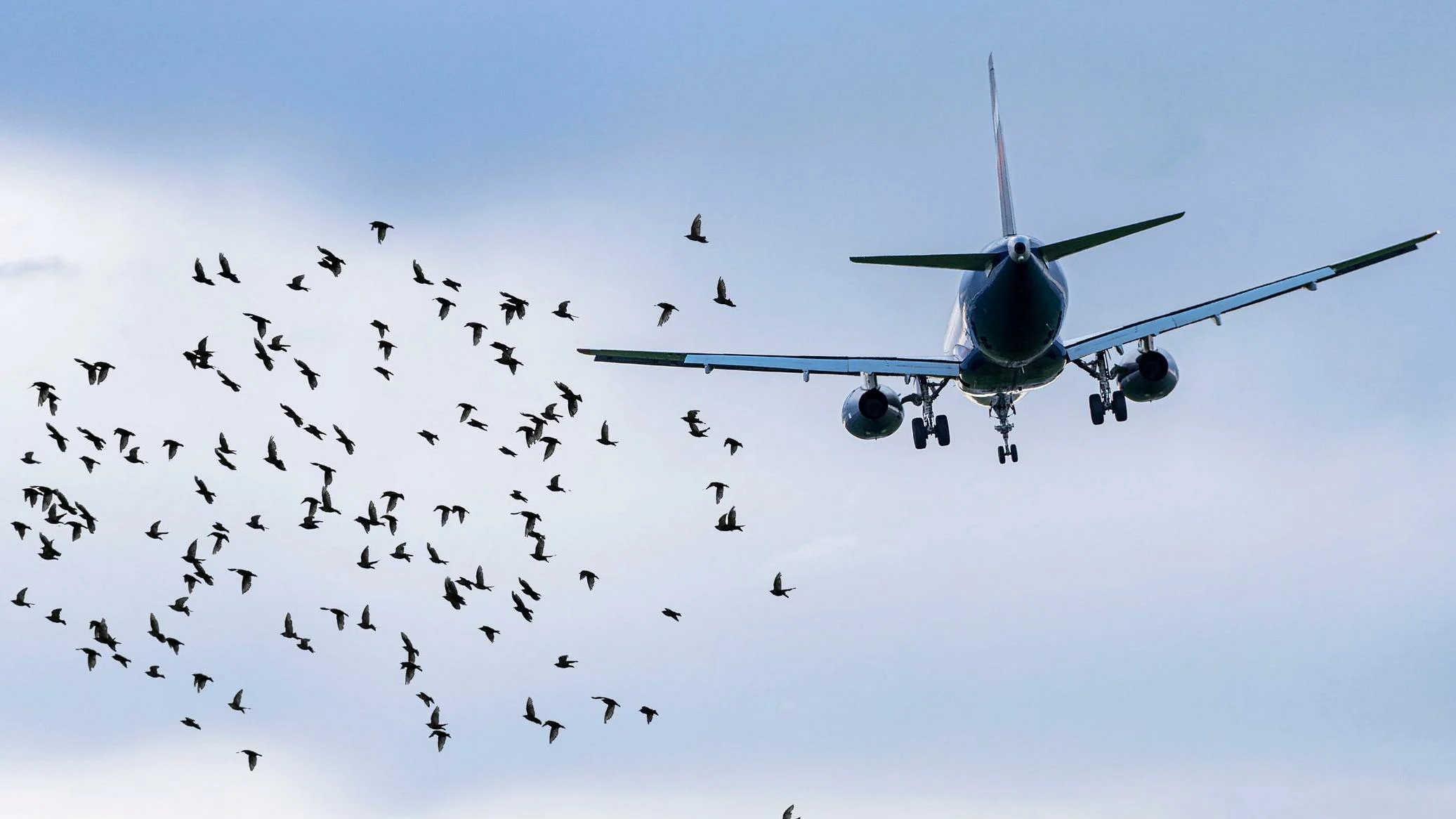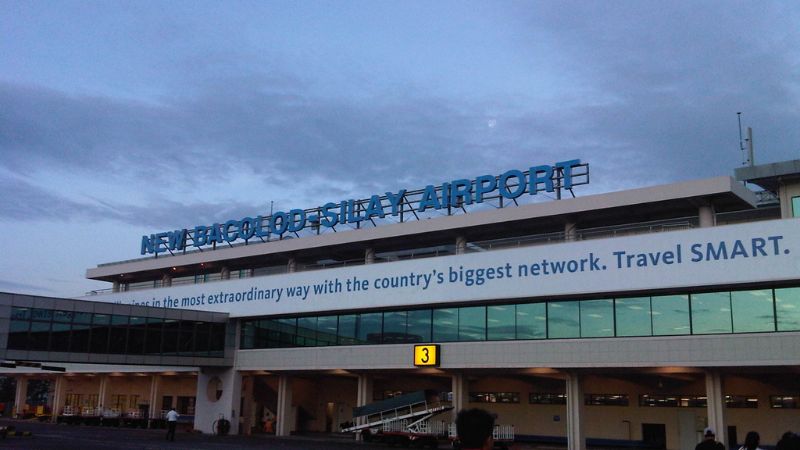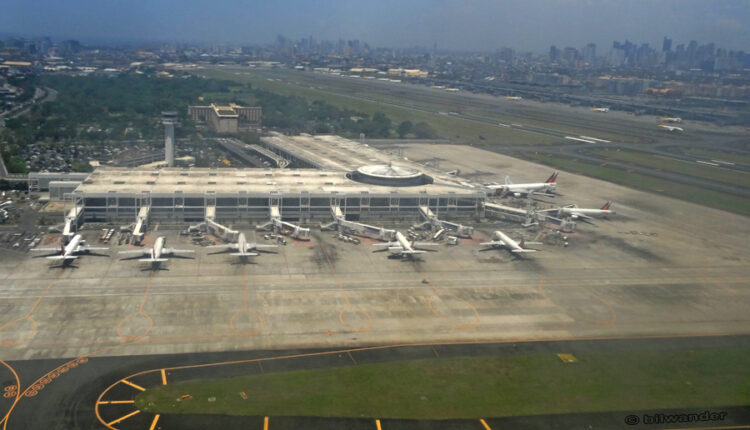Search Results forCAAP
Philippine tourism officials welcome IrAero Airlines’ new Irkutsk-Kalibo service
Russia’s IrAero Airlines marked a significant milestone in the expansion of its services into Asia with the inaugural flight between Irkutsk and the central Philippine city of Kalibo on Saturday, 25th October. The Philippine Department of Tourism (DOT) welcomed the initial flight which symbolises stronger air connectivity and tourism ties between the Philippines and Russia. Ninety-five passengers bound for Boracay were greeted at Kalibo International Airport with a water-cannon salute and cultural performances that showcased the island’s warmth and vibrant heritage. Among those on hand to welcome arriving passengers were Russian ambassador to the Philippines Marat Ignatyevich Pavlov, Russian trade commissioner to the country Artyom Tsinamdzgvrishvili, Aklan governor Jose Enrique Miraflores, Kalibo mayor Juris Sucro, and DOT director Azucena Pallugna. Also present were representatives from the DOT Western Visayas office, the Civil Aviation Authority of the Philippines (CAAP), Civil Aeronautics Board (CAB), Bureau of Customs (BOC), Bureau of Immigration (BI), and Bureau of Quarantine (BOQ). A new weekly service Based in Irkutsk, IrAero Airlines, will operate weekly Irkutsk–Kalibo flights every Saturday until March 2026, with a brief layover in Guilin, China. A second weekly route, Khabarovsk–Kalibo, will be launched tomorrow, 28th October, and will operate weekly every Tuesday until 26th March 026, with technical stops in Blagoveshchensk, Russia and Ningbo, China. Both flights will be operated using the Sukhoi Superjet 100 (SSJ100), a regional aircraft with a capacity of around 100 passengers.
Philippine authorities assure public that Mindanao airports and seaports operational following earthquake
The Philippine Department of Transportation (DOTr) assures both domestic and foreign travellers that all airports and seaports in Mindanao are currently operational following rigid inspection. Safety inspections were immediately carried out on hubs throughout Mindanao Island following the 7.4 earthquake that shook the province of Davao Oriental on Friday, 10th October. In a statement, acting transportation secretary Giovanni Lopez said he directed the Civil Aviation Authority of the Philippines (CAAP) and the Philippine Ports Authority (PPA) to continue monitoring and observing airports and seaports in the event of aftershocks. Lopez declared in the vernacular: “All ports are operational at this point in time. Indeed, service has resumed at all airports in the region, including the Davao Airport.” The secretary’s statement followed a direct order from Philippine President Ferdinand R Marcos Jnr to ensure the operability of all airports and seaports for emergency operations in light of recent earthquakes and typhoons. Other relevant measures In addition, the Philippine Coast Guard has instructed its deployable response groups to assist in search and rescue missions in communities affected by the earthquake. Love Buses have also been rerouted to areas with stranded commuters to provide free rides. Lopez added: “Commuters and motorists, meanwhile, are being assisted by personnel from the Land Transportation Office (LTO) and Land Transportation Franchising and Regulatory Board (LTFRB) in Davao to ensure road and commuter safety. Our agencies have been authorised to help commuters shift from their original routes in order to provide transportation for those affected by the quakes.” The President also ordered the postponement of upcoming events, including the Siargao International Surfing Cup which was slated for 23rd to 31st of this month, until the safety of all affected areas has been guaranteed.
Philippine transportation department works to ensure viable airfares
The Philippine Department of Transportation (DOTr) is currently working to ensure viable airfares and expand access to more domestic and international destinations, seeking to strengthen the country’s aviation and tourism sectors. At present, the DOTr is coordinating with the Civil Aeronautics Board regarding measures that balance affordability with sustainability for airlines. This initiative is concurrent with the Civil Aviation Authority of the Philippines (CAAP)’s ongoing drive for infrastructure upgrades. Philippine Airlines welcomed the department’s collaborative approach, saying it is committed to aligning with the government’s connectivity and tourism agenda. In a statement, airline executive vice-president and chief operating officer Carlos Luis Fernandez remarked: “As the flag carrier, we look forward to continuing this productive dialogue with the DOTr under the leadership of acting secretary Giovanni Lopez, confident that our joint initiatives will deliver lasting benefits to the traveling public and to the national economy.” Likewise, industry leaders view Lopez’s entry to the department’s leadership as an opportunity to strengthen coordination between the public and private sectors, ensuring policies and infrastructure improvements deliver long-term benefits to passengers and the economy. Coming up next Among the projects under study is the proposed runway extension at Siargao Airport, which would enable larger aircraft to operate more efficiently and lower the cost per seat for travelers. Meanwhile, the construction for the expansion of Siargao Airport’s passenger terminal building(PTB) is ongoing, in line with the current administration’s directive to enhance the travel experience and safety of local and foreign tourists in one of the country’s top tourism destinations. The expanded and modernized Siargao Airport PTB will be able to accommodate 750 passengers daily, from the previous maximum capacity of 200 passengers.
Philippine civil aviation authority ties up with AirAsia to mitigate bird strikes
The Civil Aviation Authority of the Philippines announced that it is working with AirAsia Philippines to mitigate bird strikes, especially in Tacloban, a key city in the centre of the country. AirAsia Philippines officials made the announcement on Thursday, 11th September. Per the airline’s report to CAAP, there was a considerable presence of birds within the runway environment and surrounding areas of Tacloban airport, hence the need to mitigate wildlife-centric incidents. In response, CAAP committed to deploying a team of biologists and wildlife experts to coordinate with local authorities to address the issue. As AirAsia Philippines president Suresh Bangah puts it: "Wildlife hazard management isn’t something airlines can do alone: it requires a collective effort among government, airport operators, and the entire industry. We are proud to work closely with CAAP, ACAP, airport partners, and fellow airlines to ensure that our skies stay safe for everyone.” What are bird strikes? A bird strike is a collision between a bird in flight and an aircraft, which usually happens during takeoff or landing. The damage it causes varies and may potentially disrupt flight schedules, affecting maintenance requirements and impacting overall airline operations. According to an AirAsia Philippines report, more than 90 bird strike incidents in several domestic airports were reported between January and August of this year. Most of these were apparently low-consequence occurrences that were routinely managed by a safety risk management process. However, there were six incidents which caused damage to aircraft components. AirAsia claimed that, in all these incidents, flight safety was never compromised, with only temporary aircraft inspections, repairs, and short delays noted. The airline also actively participates in the Air Carriers Association of the Philippines (ACAP) safety sub-committee, where airlines share data and align strategies for nationwide wildlife hazard management. Furthermore, crew advisories were intensified at high-risk airports, and coordination among its flight operations, engineering, and ground teams was enforced to ensure immediate inspections and strict reporting protocols.
Iloilo International Airport to undergo runway safety enhancement
The Civil Aviation Authority of the Philippines (CAAP) announced on Tuesday, 12th August, that Iloilo International Airport will be undergoing safety enhancement work on its runway. While work is ongoing, airport operations will be taking a break daily from midnight to 4am. According to CAAP officials, the schedule was coordinated with airline operators before implementation to ensure that flights remain unaffected. In a statement, the agency declared: "CAAP extends its sincere appreciation to the flying public for patience and cooperation during the construction period.” Necessary maintenance The 45-working-day runway safety enhancement project commenced on Monday, 11th August. Repair work includes runway edge strip and slope correction, as well as embankment works. The project also involves the removal of accumulated soil deposits, correction of uneven surfaces within the airside, and filling of low-lying areas to improve drainage and prevent water pooling during heavy rainfall. These measures are crucial for maintaining runway friction and preventing hydroplaning incidents.
Civil Aviation Authority of the Philippines launches digital safety reports portal
The Civil Aviation Authority of the Philippines (CAAP) announced that its new digital safety reports portal is now live and ready for use. As of yesterday, 1st July, the new portal is set to streamline the reporting of safety occurrences and support the timely identification and mitigation of aviation safety risks. Likewise, CAAP officials pointed out that the use of the portal also promotes transparency and information sharing among relevant agencies. Compliant with regulations In a news release published today, 2nd July, the CAAP said the mandate for the portal is compliant with Philippine Civil Aviation Regulations (PCAR) and applies to all organisations, personnel, and individuals involved in reporting incidents related to aviation safety. Per the statement: "CAAP’s safety enhancement measure is part of the broader effort to ensure that the Philippines remains aligned with global aviation safety standards and best practices.” As such, it covers all certified and approved aviation entities, licensed aviation professionals, and any individual with direct knowledge of aviation safety occurrences. The portal enables submissions under two forms: mandatory reporting and voluntary reporting. Mandatory reporting covers aviation incidents, accidents, serious incidents, and other safety-related occurrences. Voluntary reporting, on the other hand, covers observations of latent conditions, insights on human factors, operational anomalies, unsafe situations, suggestions for safety improvements, and self-disclosure of non-compliance.
Hua Hin – Thailand’s Coastal Gem and the Future Blueprint for Tourism?
Photo: Thai tourism’s future blue print? We explore how Hua Hin might be used as a model for tourism recovery and innovation across the country Tucked along the Gulf of Thailand, just a few hours from Bangkok, Hua Hin remains one of the kingdom’s most alluring coastal towns—a sanctuary where timeless elegance meets serene simplicity. My recent stay in Hua Hin, beginning mid-May, reaffirmed the reasons I call this place my “happy place.” The gentle lapping of waves, early morning walks along the shoreline, and the peaceful cadence of tropical life offered a stark contrast to the world’s current uncertainties. From my vantage point at the Hyatt—overlooking lush gardens, lotus ponds, and the saltwater scent of sea air—Hua Hin reminded me of Thailand at its best: graceful, welcoming, and quietly resilient. A Season of Reflection This visit came at a particularly poignant time for Thailand. In March, a powerful 7.7 magnitude earthquake in neighbouring Myanmar sent tremors through much of the region, shaking buildings in Bangkok and stirring unease across the kingdom. It was a stark reminder of how quickly the equilibrium of daily life can shift. Yet, as always, the Thai spirit endures. Communities rallied. The government acted swiftly. And across the tourism sector, new safety protocols and messages of reassurance were implemented. Hua Hin, with its royal legacy and gentle pace, felt like a fitting place to pause, reflect, and consider not only what’s been lost—but what may yet be regained. The Economic Engine at Risk Tourism has long been one of Thailand’s most potent economic engines, contributing nearly 20% of GDP and employing millions across both urban centres and rural provinces. Pre-pandemic, the sector generated over 3 trillion baht annually in direct and indirect revenue. With foreign arrivals dipping 1.75% year-on-year as of mid-May, and some analysts suggesting that annual tourism arrivals might only match last year’s figure—the immediate economic loss, against it’s planned revenue, is therefore staggering. In 2024, Thailand experienced a robust resurgence in its tourism sector, welcoming approximately 35.54 million international visitors—a 26.3% increase compared to 2023. This influx generated over 1.7 trillion baht (approximately USD 51.81 billion) in revenue, underscoring the sector’s pivotal role in the nation’s economic recovery. The top source countries contributing to this growth were China (6.7 million visitors), Malaysia (4.93 million), and India (2.12 million). Strategic government initiatives, such as visa exemptions for citizens of 93 countries significantly enhanced travel convenience and encouraged more visitors to choose Thailand. Domestically, Thai residents made approximately 198.69 million trips, contributing an additional 952.77 billion baht to the economy. Collectively, both international and domestic tourism activities in 2024 generated a total revenue exceeding 2.75 trillion baht, highlighting the sector’s substantial contribution to Thailand’s economic landscape. Looking ahead, the Tourism Authority of Thailand (TAT) has set ambitious targets for 2025, aiming to attract between 36 and 39 million international visitors and generate up to 2.23 trillion baht in tourism revenue. But the real danger lies in long-term erosion: not just of revenue, but of global competitiveness, investor confidence, and industry morale. Here’s the paradox, while the losses measure in the trillions, the required investment to pivot and rejuvenate the sector could be relatively modest in comparison. A government or private sector infusion of just 100–200 billion baht—a fraction of annual tourism revenues—could fund sweeping changes: from digitisation and marketing, to upskilling labour and creating crisis-resilient infrastructure. This is not just about plugging gaps, but about leveraging a slowdown to reimagine the future of Thai tourism. Five Possible Courses of Direction for Thai Tourism’s Next Chapter 1.Diversify Source Markets Beyond China and Russia Over-reliance on a few key markets makes the sector vulnerable to geopolitical and economic swings. Greater focus on India, the Middle East, Eastern Europe, and high-spending travellers from the EU and North America can spread risk and increase average per-trip expenditure. 2.Develop Year-Round Domestic Tourism Incentives Supporting Thai travellers with seasonal incentives and domestic tourism campaigns can stabilise occupancy during shoulder and low seasons. Creating loyalty programmes or tax rebates for local travellers could go a long way. 3.Upgrade Infrastructure & Digitisation Seamless travel experiences—from e-visas to smart airports and real-time transport integration—are essential. Investment in AI-powered visitor services, multilingual content, and efficient public transport in tourist areas could elevate Thailand’s competitiveness overnight. Photo: Develop year-round domestic tourism 4.Promote Sustainable & Community-Based Tourism Eco-conscious travellers are looking for meaning, not just luxury. Hua Hin and similar towns can promote authentic, low-impact experiences—such as homestays, local crafts, and conservation tourism—while supporting rural economies and reducing overcrowding in hotspots. 5.Establish a National Tourism Innovation Fund A public-private investment vehicle could support SMEs in the hospitality and travel sectors with grants, training, and innovation hubs. Focus areas could include green tech, accessibility for seniors and people with disabilities, and wellness-oriented travel. Why Hua Hin Still Matters In an uncertain global landscape, Hua Hin continues to offer rare clarity, calm without sterility, tradition without the trappings of cliché. In Hua Hin I enjoyed peaceful afternoons by the lagoon pool and evenings filled with jazz and sea breezes, I rediscovered not only a destination—but a direction. The Thai tourism industry has been knocked off balance, yes—but it is not broken. With strategic thinking and modest but meaningful investment, it can rise stronger, smarter, and more inclusive than before. And towns like Hua Hin, quiet stars in the national constellation, will be vital in guiding that journey forward.
US$3.6 million allocated for expansion of Bacolod-Silay Airport
The local government of Bacolod in the Central Philippines welcomed an additional allocation worth US$3.6 million for the expansion of the Bacolod-Silay Airport The funding was approved by the Civil Aviation Authority of the Philippines (CAAP) even as the US$798,000 rehabilitation of the airport’s passenger terminal is ongoing. The rehabilitation seeks to replace a number of outdated components and is set for completion in December of this year. In a statement issued over the weekend, Bacolod city mayor Alfredo Abelardo Benitez said: “I thank CAAP for approving our request and allocating PHP205 million for the Bacolod-Silay Airport upgrade. This brings us closer to a safer, more efficient, and passenger-friendly airport for Bacolod and the rest of the province. We are committed to seeing these projects through for the benefit of our people.” Benitez added that he looks forward to upgrading the Bacolod-Silay Airport with the implementation of the latest development project, along with the current rehabilitation works and the support from the Tourism Infrastructure and Enterprise Zone Authority (TIEZA). A necessary response In a letter addressed to Benitez dated 24th April of this year, CAAP director-general Raul Del Rosario said the additional allocation is in response to a request made by the mayor last 25th February for funding for the improvement and renovation of the Bacolod-Silay Airport. A portion of the approved allocation is specifically for improving and expanding the passenger terminal building to increase the check-in and pre-departure areas to accommodate the growing passenger demand. The remaining balance will be used to widen the access road for the fire station building.
Iloilo International Airport welcomes first direct Scoot flight from Singapore
Iloilo International Airport welcomed Scoot’s first direct Singapore-Iloilo flight early on Monday, 14th April. The inaugural flight from Singapore carried 107 passengers when it arrived in the Central Philippine city at 5:35am. This maiden flight for Singapore Airlines’ low-cost carrier was welcomed with a water cannon salute, local music, and refreshments. Subsequently, the return flight heading to Singapore flew out at 6:10am on the same day with 103 passengers. The Civil Aviation Authority of the Philippines (CAAP) released a statement regarding the flight, declaring: "The new route reinforces Iloilo’s role as a regional gateway and is expected to boost tourism and economic activity in Western Visayas. CAAP continues to work closely with aviation partners to promote regional growth while upholding the highest standards of safety and service.”
Philippine senator points out need for upgrading aviation safety measures
Philippine senator Francis Tolentino reminded the country’s aviation and travel sectors of the need to upgrade aviation safety measures implemented among Philippine airports. Tolentino made his remarks during his radio programme on Monday, 30th December, the day after the deadly Jeju Air 7C2216 crash in South Korea. During the programme, Tolentino remarked: "Changes in the pattern and volume of migratory birds should be constantly tracked, especially since the Ninoy Aquino International Airport (NAIA) is located a few kilometers from Freedom Island, a protected bird sanctuary in Manila Bay.” Assurance from relevant authorities For their part, the Civil Aviation Authority of the Philippines (CAAP) likewise assured the Filipino public of the ongoing upgrades to the country’s aviation safety protocols, particularly in preventing bird strikes. CAAP spokesperson Eric Apolonio who was a guest on Tolentino’s programme spoke about how the increasing population of migratory birds around airports and measures to mitigate bird strikes were among the topics discussed by the organisation in a recent seminar for airport safety personnel. Apolonio added that climate change is one of the factors considered by the agency in implementing measures to deter bird strikes on aircraft that are either taking off or landing at the country's airports.
No companies found matching your search.
Return To HomeNo Event found matching your search.
Return To Home

